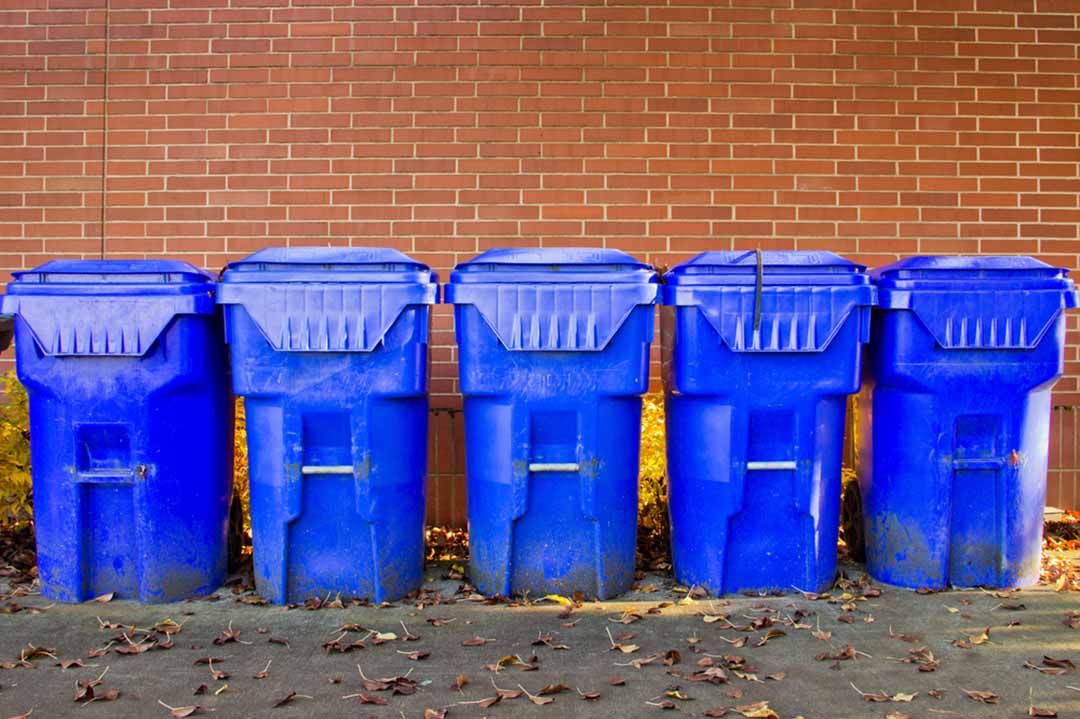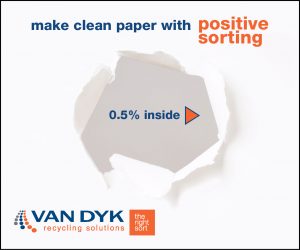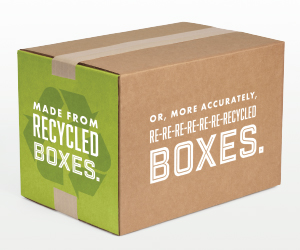
Three recycling program leaders from across the U.S. said that education and outreach efforts have seen budget cuts due to the pandemic. | Stephen Griffin/Shutterstock
Leaders from three municipal recycling programs of varying size, including the largest city in the U.S., say they are grappling with budget issues and making alterations to collection service as the coronavirus pandemic continues.
During a panel discussion last week, recycling officials in New York City; Austin, Texas; and Fort Collins, Colo. described early and ongoing impacts from the health crisis, which began widely affecting the U.S. in March.
All three cities noted an increase in personal protective equipment (PPE) ending up as contamination in the recycling stream. However, none of them have seen a substantial contamination rate increase during the pandemic. And that comes despite a significant shift in material generation, as each city has seen the commercial sector decline and residential volumes grow.
Additionally, despite their different sizes, the cities are facing very similar budget problems from the pandemic, and they anticipate those struggles will continue for some time.
“We are currently dealing with serious financial challenges … spurred by the COVID crisis and the need to go on pause and stay at home,” said Bridget Anderson, deputy commissioner for recycling and sustainability at the New York City Department of Sanitation (DSNY).
In addition to Anderson, the discussion featured Ken Snipes, director of Austin Resource Recovery, and Caroline Mitchell, lead waste reduction and recycling specialist for Fort Collins.
The event was hosted by Resource Recycling, Inc. as part of The New Normal, a virtual series held in lieu of the Resource Recycling Conference and Trade Show, which was postponed due to the pandemic.
Pandemic suspends services and new initiatives
One major recycling impact to cities across the country has been a suspension of certain services as resources are strained.
New York City, which has a population of about 8.3 million, quickly became the epicenter of the pandemic in the U.S. early this year. The waste collection department was no exception, with DSNY facing over 600 positive cases of COVID-19 and multiple deaths within its workforce. Each time there was a positive case in a DSNY garage, the facility was closed and cleaned extensively.
Those realities and other factors led to service cuts, which hit voluntary materials recovery efforts hard. The city began a pilot organics collection program in 2013, a service that grew to serve about a third of the city by 2018. The city also has 175 food scraps drop-off sites.
The services were very popular among residents who used them, Anderson said. But the food scrap drop-off program, along with other special waste drop-off recycling events, were put on pause due to COVID-19, to reduce in-person interactions. As discretionary programs not mandated under city regulations, those services were among the first to be considered for cuts.
“Those were meant to be temporary suspensions for the COVID pause period, but then the budget crisis hit and those temporary suspensions became a suspension for the entire next fiscal year, and then added on top of that was the cancelation, the suspension of the curbside composting program as the budget situation became more and more dire,” Anderson said.
In Fort Collins, which has about 170,000 residents, the recycling impacts from COVID-19 came in phases. When the pandemic’s effects began to filter into communities across the country, there was a “panic of trying to figure out how big the impact was going to be,” Mitchell said. The city wanted to respond as aggressively as was needed but also avoid having too strong of a response.
In a move to support haulers by reducing the services they needed to provide, the city delayed the start of its yard trimmings collection season, which was slated to open on April 1. Haulers were given permission to delay that service by up to two months.
The city also delayed implementing a multi-family recycling mandate. Fort Collins was planning to start a “community recycling ordinance,” which would require haulers to provide recycling service to most multi-family and commercial properties, at the end of the year. That move has been delayed by COVID-19.
“That was in recognition that we had an emergency to focus on, and that typically rolling out service to new customers, it just takes more work,” Mitchell said. The city wanted to ensure it could meet core needs before rolling out new services.
Now, as it “seems clear that COVID’s not going anywhere anytime soon, we’re more in a maintenance situation of working with the haulers to understand and develop contingency plans” in case there are spikes in the future, Mitchell said.
In Austin, which has about 1 million residents, a shortage of collection staff impacted service early on.
The city provides most residential recycling services through Austin Resource Recovery, Snipes explained. Early in the pandemic, there were days when as many as 98 of the department’s drivers were out for various reasons, out of a total staff of about 240, Snipes said. Some of it was due to concerns from the numerous unknowns about the virus.
“That caused us to have to start to triage our services and look at what we would suspend,” Snipes said. The city used its emergency operations protocols to determine how to respond, and it ended up suspending bulky material and brush collection. If more services need to be cut, next on the list would be yard debris collection.
Austin Resource Recovery temporarily closed a drop-off recycling facility as well as a household hazardous waste collection center. But the city countered that suspension by offering a contactless curbside collection service for those special materials.
Generation and contamination shifts, but doesn’t spike
As pandemic-driven regulations took hold, recycling generation began to shift significantly.
In New York, about 5% of residents evacuated the city to other areas. Despite the slightly lower population, the sanitation department was collecting more tonnage. That’s because the commercial sector, which is serviced by private haulers, diminished sharply and residents were staying at home much more than normal.
The shift was particularly striking by material type, with metal, glass and plastic up 19% year over year for the four-month period after the stay-at-home orders began.
There are good parts of that, with more material coming in that can be marketed to buyers, but it also brought new contamination trends, Anderson explained. The city began seeing PPE in the recycling stream.
The pandemic impacted the type of contamination in Austin’s program, with more masks, face shields and nitrile gloves in the recycling stream. However, the overall level of contamination hasn’t increased dramatically.
Similar to New York City, Austin has seen a shift from commercial to residential generation. But the residential sector typically does a better job of recycling properly than commercial generators, Snipes explained, which may explain the lack of contamination spike.
Austin’s most recent contamination rate was about 17% according to an audit conducted last October. The city was planning to do a more recent audit, but it was pushed out further due to the pandemic.
Fort Collins typically averages between 10% and 15% contamination in its recycling stream, and that hasn’t changed substantially during the pandemic. However, like the other cities, Mitchell said more PPE is ending up in the stream.
Outreach efforts hit hard
On the budget side, one of the key recycling impacts has been in education and outreach efforts, all three leaders said.
“Most, if not all, of our in-person outreach has gone on pause,” Mitchell said. And due to budget cuts, most of Fort Collins’ paid advertising outreach options are on hold as well. Meanwhile, many of the city’s online distribution channels must be prioritized for emergency communications.
“Unfortunately, there is probably a net decrease in the education and outreach reaching our community right now, which is certainly not our goal,” Mitchell said.
In New York City, given the city’s population, outreach efforts are always expensive. One citywide recycling outreach mailer, for example, costs $1 million. That budget is gone, Anderson said.
“We try to leverage digital sources, create videos, our websites, our social media pages,” she said. The city was experimenting with boosted posts using paid social media options before the pandemic, but “that budget is totally gone,” Anderson said. Without paid posts reaching a wider audience, social media outreach is often limited to residents who already know about proper recycling.
Austin is in the same boat.
“We’re not doing any in-person outreach,” Snipes said. The city is trying to drive traffic to its website for recycling education, and it’s trying to use social media.
“I think that’s probably going to be the mode of operation for the foreseeable [future],” Snipes said. “At least for the next year or so I think we’re all going to be operating on that same level.”
More stories about local programs
- State law, local ordinance and the question of alignment
- Colorado Summit for Recycling taps trending topics
- California advisory board examines barriers to EPR



